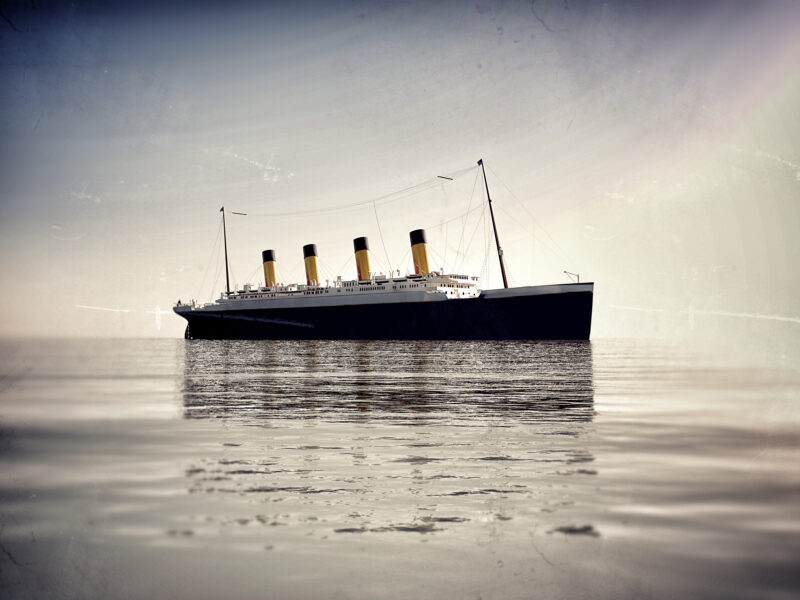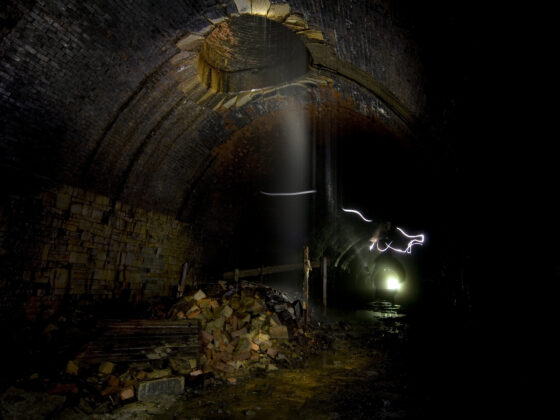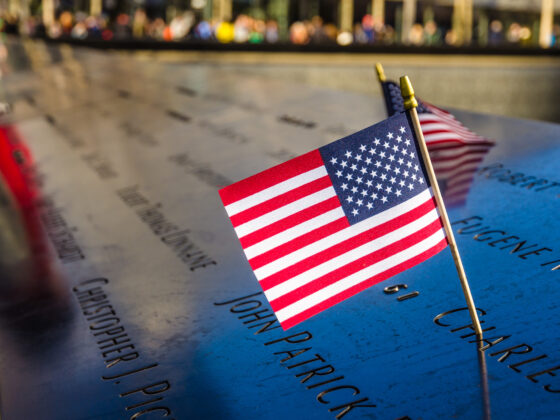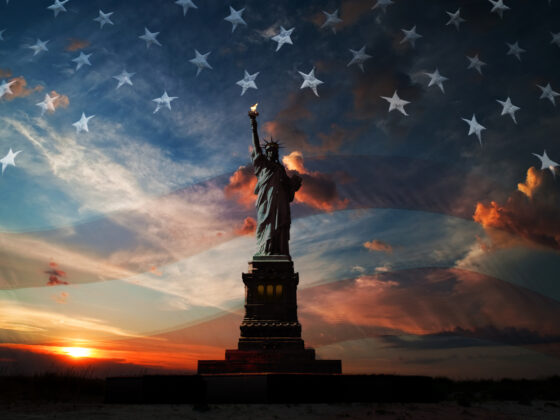In 1910, seven men gathered on Jekyll Island, off the coast of Georgia, USA, to plot the establishment of a new central bank, the Federal Reserve Bank, in order to seize control of money creation from the US government and put it in private hands. The Rockefeller banking dynasty was represented by Nelson Aldrich and Frank Vanderlip, while J.P. Morgan was represented by Henry Davidson, Charles Norton, and Benjamin Strong. Morgan and Paul Warburg represented Europe’s Rothschild financial family. All of these men went to great lengths to hide their names and their heinous purpose, traveling incognito.
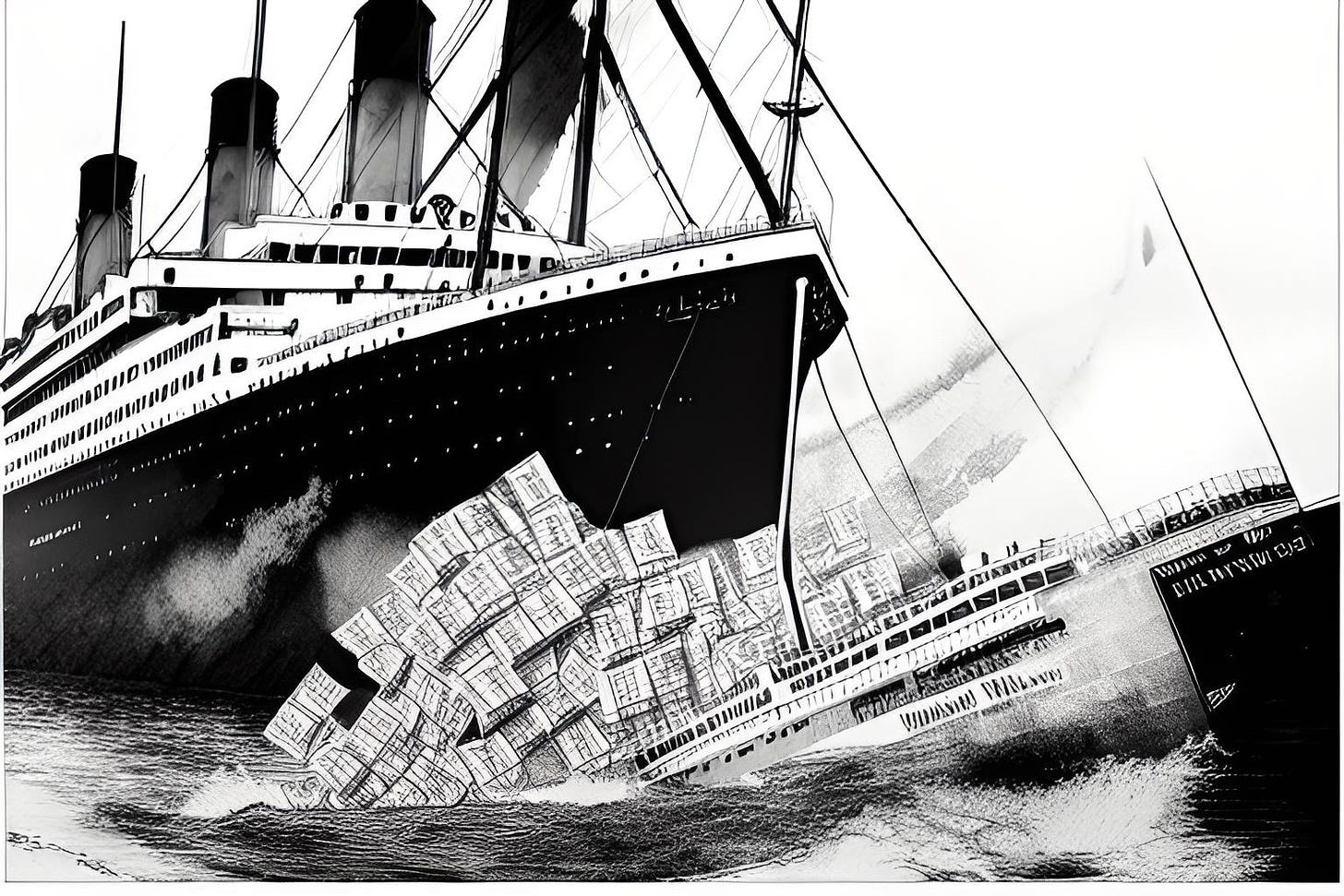
The Morgans, Warburgs, Rothschilds, and Rockefellers are intense rivals for short-term earnings, but are willing to commit to combined endeavors whenever required to further the larger “cause.” In 1913, they created the Federal Reserve Bank, the United States’ national financial cartel. According to Edward Griffin in “The Creature from Jekyll Island” “… it tells a story of how bankers have lured politicians with easy money and end up controlling most of the world.”
These most powerful families are continuously working to undermine constitutional freedoms in America (and worldwide). At the beginning of the twentieth century, John Pierpoint (JP) Morgan controlled the White Star shipping line as well as a major part of the American banking and manufacturing industries. In 1908, he decided to construct a new class of luxury ships to allow the affluent to traverse the Atlantic in previously unimaginable opulence. The ‘Olympic’ class of ships was named after them, and construction of the gigantic ocean liners ‘Olympic,’ ‘Titanic,’ and ‘Britannic’ started in 1909 at the Harland and Wolff shipyard in Belfast, Ireland.
Unfortunately for Morgan and his personal bank account, this money-making endeavor did not go as planned. The Olympic, the first of the three sister-ships to be completed (followed by the Titanic and then the Britannic), was involved in a rather unfortunate accident caused by a heavy collision with the British Royal Navy cruiser, HMS Hawke, in September 1911 in Southampton Water off the south coast of England, a few weeks after its maiden voyage, and had to be extensively ‘patched-up’ before embarking on the return journey to Harland and Wolff’s shipyard in Belfast.
In retrospect, does it not seem strange that, despite being the first of the (virtually) identical triplet sisters to be completed and enter service, the Olympic received none of the publicity or public acclaim that her younger sister did the following year? Why would that be the case? Surely, the great pomp and carnival-like ambiance surrounding the inaugural journey of these “floating wonders of the age” should have been saved for the first one to join service, the Olympic, rather than the second, the Titanic? In fact, the event of Olympic’s maiden journey in 1911 was comparatively quiet. Could the huge accolades and press bestowed upon the Titanic’s maiden journey have been part of a plot to attract the wealthy and renowned in large numbers, for reasons that will be revealed shortly?
Meanwhile, a Royal Navy investigation into the mishap, predictably, found the crew of the Olympic and thus the White Star Line culpable for the crash, effectively rendering the White Star Line’s insurance useless and void. The shipping company would be obligated to pay the full cost of the repairs to both ships. To cut a lengthy tale short, this cost the White Star Line at least £800,000 (approximately £60 million today) in repairs and missed income while the ship was unable to conduct its trip back and forth across the Atlantic. With the White Star Line’s massive financial investment needing to be repaid sooner rather than later, this put severe pressure on the organization and impacted the Titanic’s final completion, further contributing to the financial black hole in which the White Star Line now found itself increasingly consumed.

However, even worse news was on the way for J.P. Morgan and the White Star Line. The Olympic’s devastation was far worse than anyone had anticipated. It didn’t help things when the Olympic was engaged in another accident, this time with a partly submerged wreck. Although the damage caused by the Hawke incident had been repaired as good as possible, there were rumors circulating among the Harland and Wolfe workforce and White Star Line crews that not all was well with the Olympic. This appeared to be confirmed when it lost a propeller blade in the second incident, causing further severe vibrational damage to the already crippled ship. It is thought that the ship’s keel was twisted and thus damaged beyond economical repair, essentially condemning her to the scrapyard. If this had been the case, the White Star Line would almost certainly have gone insolvent, given its current precarious financial position.
“…it took a fortnight of emergency patching to Olympic’s hull before she was in any fit state to attempt the journey from Southampton to Belfast for more complete repairs. Able to use only one main engine, the crippled liner made the voyage at an average speed of 10 knots, wasting the exhaust steam from the one usable engine. This steam would normally have driven the central turbine engine, which shows that this engine, its mountings or shafting had been damaged in the collision. As this engine sat on the centreline of the vessel, immediately above the keel, which the propeller shaft ran through, we can reasonably assume that the keel was damaged” — Robin Gardiner, “Titanic, the Ship that Never Sank?”
If Gardiner’s theory is right, the roots were sown for a truly extraordinary event: the covert switching of the names of the two ships, Olympic and Titanic. Gardiner provides a lengthy list of credible sources in his well-researched writing. Testimonies, undeniable facts, and photographic evidence that would appear to point to the fact that the two ships were switched with the intention of staging an iceberg collision or other unknown fatal event, with the Titanic (originally the Olympic) and many of its passengers and crew being sacrificed in an audacious insurance scam that would save the White Star Line from financial ruin.

“Almost two months after the Hawke/Olympic collision, the reconverted Titanic, now superficially identical to her sister except for the C deck portholes, quietly left Belfast for Southampton to begin a very successful 25 year career as the Olympic. Back in the builders’ yard, work progressed steadily on the battered hull of Olympic. The decision to dispose of the damaged vessel would already have been taken. It must have been obvious from quite early on that the vessel was beyond economical repair, so these repairs need not have been quite as thorough as they otherwise might have been. Instead of replacing the damaged section of keel, longitudinal bulkheads were installed to brace it”. — Robin Gardiner
In light of this statement, it is significant that when the Titanic’s wreckage was first explored by Robert Ballard and his crew after its discovery in 1986, the first explorations of the wreckage revealed (completely undocumented in the ship’s original blueprints) iron support structures in place that appeared to be supporting and bracing the keel. This was never satisfactorily explained, neither at the time nor later, but it would certainly be significant if correct, and there is no reason to believe it is not correct, as it was reported by the perplexed Ballard himself, who, of course, knew nothing (and probably still does not even now) about the alleged switching of the two ships’ identities.
Meanwhile, in the United States, several influential individuals opposed the planned Federal Reserve Banking System. Among those who resisted the creation of this abomination were Benjamin Guggenheim, Isidor Strauss, and John Jacob Astor. These men were among the world’s wealthiest, but their fortunes had been amassed through industrial, retail, and leisure interests rather than the financial sector, and they stood solidly in the way of the bankers’ fraud scheme. In my opinion, if Morgan and the other collaborators came up with a really clever “kill two birds with one stone” answer, not only would White Star Line have handled the Olympic issue and thus its own financial problems, but J.P. Morgan would also have fulfilled his desire to see his proposal to create the Federal Reserve implemented.
All three of the aforementioned men (along with many other notable individuals at the time) were enticed to board the Titanic’s now-hyped-to-be, highly prestigious maiden voyage in order to end their opposition to the Federal Reserve plans, and thus another reason for the ship’s destruction was a stand-off between the mega-rich in which Guggenheim, Strauss, and Astor could be eliminated. They had to be destroyed in such a manner that no one would suspect homicide and that the real cause of their demise would be completely obscured. Simply arranging for all three men to have separate ‘accidents’ would have looked far too suspicious, so they had to be lured to the same place at the same time, and Titanic’s pre-planned, ill-fated inaugural voyage provided the solution. Could this have been the real cause for the Titanic’s pompous inaugural voyage, although the Olympic was given a much less recognized or flamboyant “send-off” on June 14, 1911, despite being the first one off the production line?
Morgan was supposed to be on the ship, but as was always planned, he had a “last-minute change of plan” due to a “bout of ill health’” and significantly failed to show up at Southampton at the appointed time, so his personal stateroom remained empty as the giant vessel pulled away from Southampton docks on the afternoon of the 10th April 1912, to the delight of the cheering multitudes on the quayside.
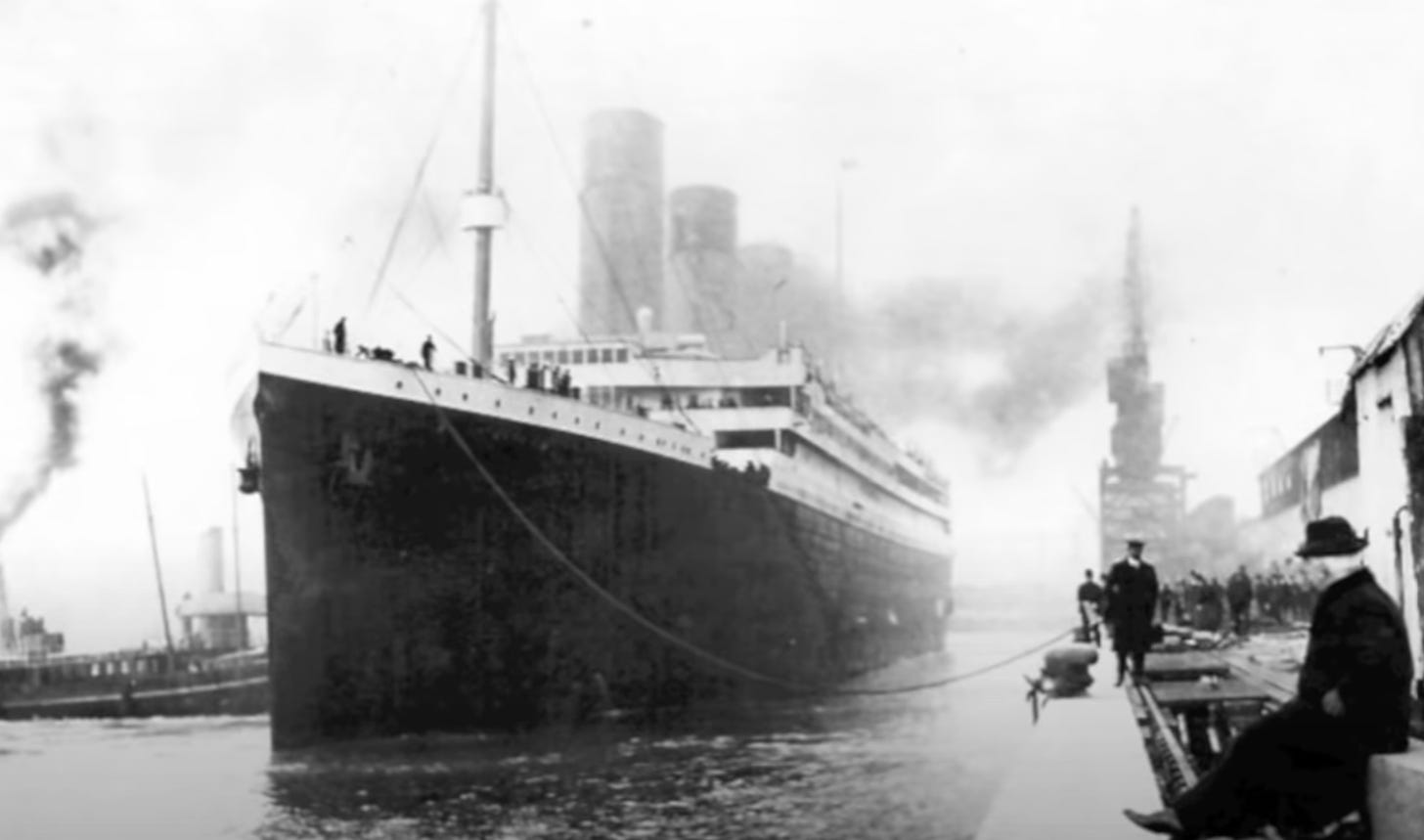
The Titanic’s Captain, Edward Smith, had extensive knowledge of the North Atlantic seas; in fact, he had been traversing the North Atlantic for more than a quarter-century. He was widely known as the “world’s most experienced captain” in the North Atlantic seaways. He also had a thorough understanding of where the icebergs were. On a moonless night, he directed the Titanic at maximum speed at around 22 knots into a massive ice field 80 square miles in size. Why would a seasoned captain adopt such a risky course of action? The truth is that he had gotten his instructions straight from his boss, J.P. Morgan, and had acted on them. As a result, he was completely dedicated to steering his ship into catastrophe.
The consequences were completely out of character for this seasoned, expert mariner. Could he have been struggling with his conscience? Should he become the heroic Captain, saving the day, or should he defy his lord, sink the ship, and cold-bloodedly kill up to 3000 people? Significantly and conveniently (for the conspirators), Smith, as Captain, is said to have perished with the ship. Could Smith have even been ‘allowed’ to live, knowing what he undoubtedly knew about the “incident?” One would think not.
As is well known, there were insufficient lifeboats to accommodate the entire complement of passengers and staff, and some of them departed the ship with as little as one-quarter capacity, which could have been used to maximum benefit in the execution of the master plan. The Captain curiously directed the launch of white flares, even though the international standard color for warning flares was (and still is) red. The Titanic was outfitted with white, blue, and crimson pyrotechnics. Other ships traveling close to these flares were deliberately misled, believing that the passengers on the Titanic were having a fireworks display.
Even if some may dismiss my theory as mere speculation, the real Titanic tale is very different from the official, ubiquitous one portrayed in books and the numerous films and documentaries produced based on this tragic incident. Walter Lord’s book, “A Night to Remember” (Longmans, Green & Co, 1956), and the feature film of the same name, are the sources most accountable for the Titanic myths and folklore that persist today. Lord was a former member of the US intelligence services (OSS and CIA), but given that anyone who has been a member of these organizations in effect always remains a member in a way, can we really rely on his accounts, or are they just more subterfuge among a morass of contradictory stories surrounding the event?
What would drive a former member of one of the world’s most elite security agencies to compose a novel about an ocean liner disaster? As seems to be the case with any alleged conspiracy, we are bombarded with these so-called “facts” by the controlled media to the point where we think they cannot possibly be false or intentionally misleading. Many of the main Titanic “facts” have since been proven to be untrue, but the same version of the tale continues as the ultimate de facto reality. The influence of propaganda on the human mind is indicative of the methods used to pervert most events.
“As I delved deeper into the story, more and more inconsistencies became apparent. Inconsistencies that individually meant little, but collectively pointed to a grimmer reality than usually depicted in the heroic legend. … Officers who were later acclaimed as heroes were exposed as anything but. One in particular removed a little boy from a lifeboat at gunpoint, before escaping in that same boat himself. … Descriptions of the collision and damage supposedly sustained by the Titanic do not agree. The ‘slight scrape’ with the ice that was hardly noticed by most aboard contradicts solid evidence of structural damage at least 51⁄2 feet (1.6 m) within the outer hull of the vessel. … Then came evidence to show that the ice the ship encountered was seen first not 500 yards (ca. 457 m) ahead, but more like 11 miles (ca. 18 km). I began to wonder if perhaps the sinking of the Titanic might not have been an accident after all.” — Robin Gardiner
Did the Titanic, in fact, collide with an iceberg? We only have the eyewitness testimony of four individuals to corroborate or deny this truth. There are more people who claim to have seen Bigfoot. Yet, the sinking of the Titanic is presented to us as historical fact, whereas claiming to have seen Bigfoot turns you into a lunatic. First Officer Murdoch, the fifth witness, did not survive to share his tale.
Gardiner has not commented on this theory, but the copious amounts of ice on the Titanic’s deck reported by many survivors could easily have been the result of any collision dislodging the icy build-up on masts, funnels, etc., or it could even have been easily shaken loose from the hundreds of yards of overhead rigging and wiring by the ship’s engines being thrust abruptly into reverse. After all, it was a bitterly chilly, still night with temperatures well below freezing.
Numerous legends are surrounding the incident, but there is ample proof that the Titanic was not the only ship in that exact position that night. For example, there is a picture of a floating lifeboat that can be ruled out as being from the Titanic due to being different in colors from the Titanic’s lifeboats.
Then there’s the 1.6-meter-deep gouge in the ship’s side, which cuts through the exterior steel plates and into the inner skin. Compacted ice is known to be extremely strong, even stronger than steel under certain circumstances, but there is no proof that it is capable of causing such catastrophic harm to steel that I am aware of. Furthermore, the ship’s exterior has a comparatively thin 15 cm puncture line. In combination with a penetration of about 1.6 m, this would lead to an almost impossible-shaped ice outcrop colliding with the ship at the most crucial spot.
Whatever the reality is, the point is that there are so many distinct possibilities that the official narrative is almost certainly a complex fabrication. Both the American and British government investigations were considered to be a “whitewash” at the time, with much evidence ignored and eyewitness statements twisted or even fabricated to suit the “official” narrative. It is also shocking to learn that of the 102 witnesses called to the British inquiry only two were passengers (the powerful Gordons of the famous London gin company), and it is even more shocking to learn that none of the witnesses (crew or passengers) were allowed to offer their own first-hand evidence of any kind and were strictly restricted to simply answering questions without elaboration. This sounds very much like a “whitewash” to me by any measure. The passage of time has also helped to further obscure the riddle.
We should also note that, of all the (probably purposefully contradictory) information unearthed by the two inquiries, the most perplexing is the situation regarding the ‘yellow-funneled steamer’ observed near the Titanic by the officers and crew of the Californian around the time of the incident and which has never been identified or explained away at all. Significantly, despite its presence in several contemporaneous newspapers, this unusual occurrence does not even warrant a mention in any remaining Titanic tales. The crew of this ship (whoever or whatever she was) must have been aware that they were around the Titanic’s demise at the same time, so why did no one from the ship come forward to volunteer any evidence or information, or simply to state that they had seen nothing significant, instead of disappearing forever into the mists of history? It also begs the issue of why no effort was made to find the ship or its identity, neither by the inquiries nor subsequently by independent investigators. Even if attempts were made at the time, they were, as far as I can tell, very effectively covered up, and no proof exists today. Could this enigmatic yellow-funneled craft have played any role in the Titanic’s devastation? Personally, I think it is a very real possibility, and that the “iceberg crash” is merely a ruse to protect the conspirators.

The Californian’s Captain Lord became the official scapegoat for the tragedy due to his alleged “negligence” in not coming to the Titanic’s assistance sooner, although the Californian was probably only about 11 miles (ca. 18 km) away when the Titanic sank. That was after he said the following:
“…When I saw another ship coming, I asked [the radio operator] what vessels he had within range; he responded, ‘The Titanic,’ to which I replied, ‘That is not the Titanic; she is too tiny and lacks sufficient lights.’ …the chief officer was sweeping the southern horizon with his glasses, and finally reported he saw a four-mast steamer with a yellow funnel to the southward of us, and asked if we should try to get down to see her.”
Furthermore, when 173 of the surviving crew members, both male and female, arrived back in England at Plymouth ports from New York onboard the steamer Lapland two weeks after the tragedy, they were first unlawfully refused their rights to speak to their trade union reps. Additionally, they were illegally detained overnight against their wishes (I believe the common terminology for this act is unlawful imprisonment or even kidnapping) in a containing area within the dockyard itself, where they were forced to sign a document they thought was the “Official Secrets Act,” promising to keep the actual events of the night of 14th / 15th April secret forever. They were warned that if they did not comply, they would be arrested and “never work again,” not just for White Star but for any company. In those days, the failure to find gainful work could be a death sentence for the crews and their families. So, take what you will from that, but I can’t conceive of any reason why this should happen if the official narrative is true. It’s also worth mentioning that, in the days before mass and instantaneous communication, it was far simpler to create or twist facts and bury people’s own stories.
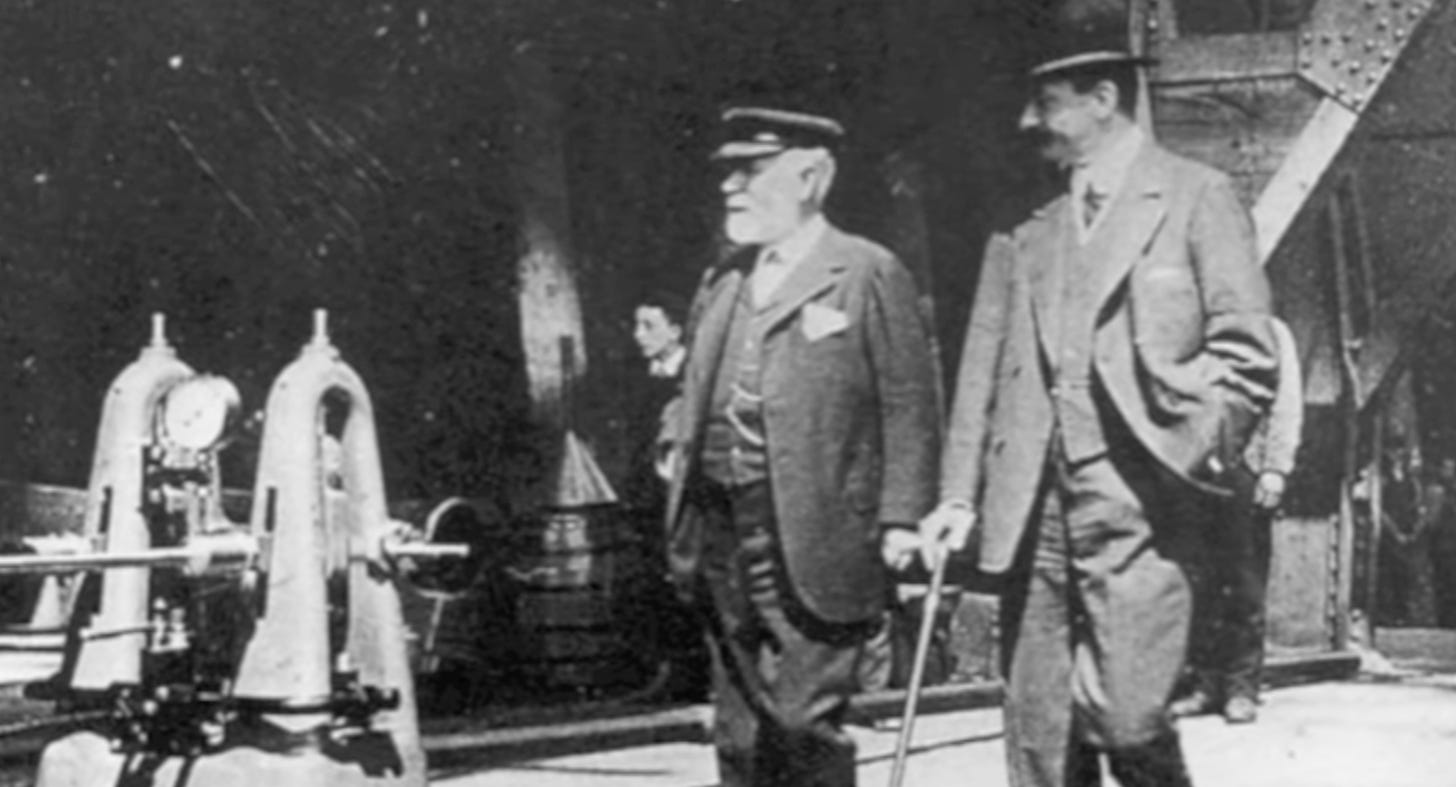
So, did Captain Smith purposefully guide Titanic into a massive ice field without slowing down in order to create the cover-story of the iceberg impact, knowing full well that he was setting up Titanic to be rammed by the yellow-funneled mystery ship, in fulfillment of the Elite’s heinous plan? In addition to the officer on assignment on the Bridge, First Officer William Murdoch and Quartermaster Hitchens, as well as Quartermaster George Rowe on the after-bridge, lookouts Frederick Fleet and Reginald Lee were the only others known to be on deck to have observed the events firsthand.
Only four of these five witnesses survived, and they were all ‘lower-class’ people. Putting excessive pressure on four working-class people to remain silent over a century ago would have been a comparatively easy job. First Officer Murdoch is said to have “committed suicide” in the aftermath of the accident while the ship was being abandoned, but there is no firm proof to support this claim. Why would he do such a thing? He has also been accused of killing passengers before turning the gun on himself, which his family has fiercely denied ever since, so could there be a more nefarious reason for his death, as well as Captain Smith’s? Suicide has always been a very handy cover-story for silencing murder over the years, and it is perhaps important that Guggenheim, Strauss, and Astor, did not live to tell their stories either. Under the conditions, and in the post-collision mayhem and chaos, how simple would it have been for a hired killer to dispose of Smith, Murdoch, Guggenheim, Strauss, and Astor to ensure that none of them avoided their predestined fates despite all odds?
Thus, the three wealthy men who opposed the formation of the execrable Federal Reserve System were disposed of, along with the ‘collateral damage’ of fifteen hundred other innocents. This effectively removed the main opponents, who could not have been ‘bought’ or overly swayed in the same way that Congress lawmakers were.
But would these individuals kill so many people in cold blood for monetary gain? Unfortunately, this is only one tiny case among many, many others that are far too numerous to list. As everyone who lived through the past years should have realized, these multi-generational mass killers regularly kill and even conduct genocide in order to maintain their status, riches, and places of power and to further their own goal. Any person or individual capable of sacrificing billions of people’s health, wealth, and success for future generations in order to obtain financial control of the world would go to any length to accomplish their own selfish goals. Murdering a ship full of innocent passengers, including women and children, for financial gain in the form of a fraudulent insurance payout would, in my opinion, make them more than capable of sinking the same ship of people in order to eliminate three powerful enemies who stand in the way of their nefarious ambitions. It’s just good business.

The Federal Reserve System was thus established without serious opposition in the United States in December 1913, and very soon after, the Elite had amassed sufficient funding through the despicable methods of the Federal Reserve Bank to move on to the next phase of their plan and begin World War I.
Whatever you may want to believe now: I am sure we can all agree that no one of us thinks that J.P. Morgan sank the Titanic with his bare hands. Thanks, Reuters, for this astonishing fact check.
If you like this article, please leave a like. It costs you nothing and helps spread the word. Thank you!


